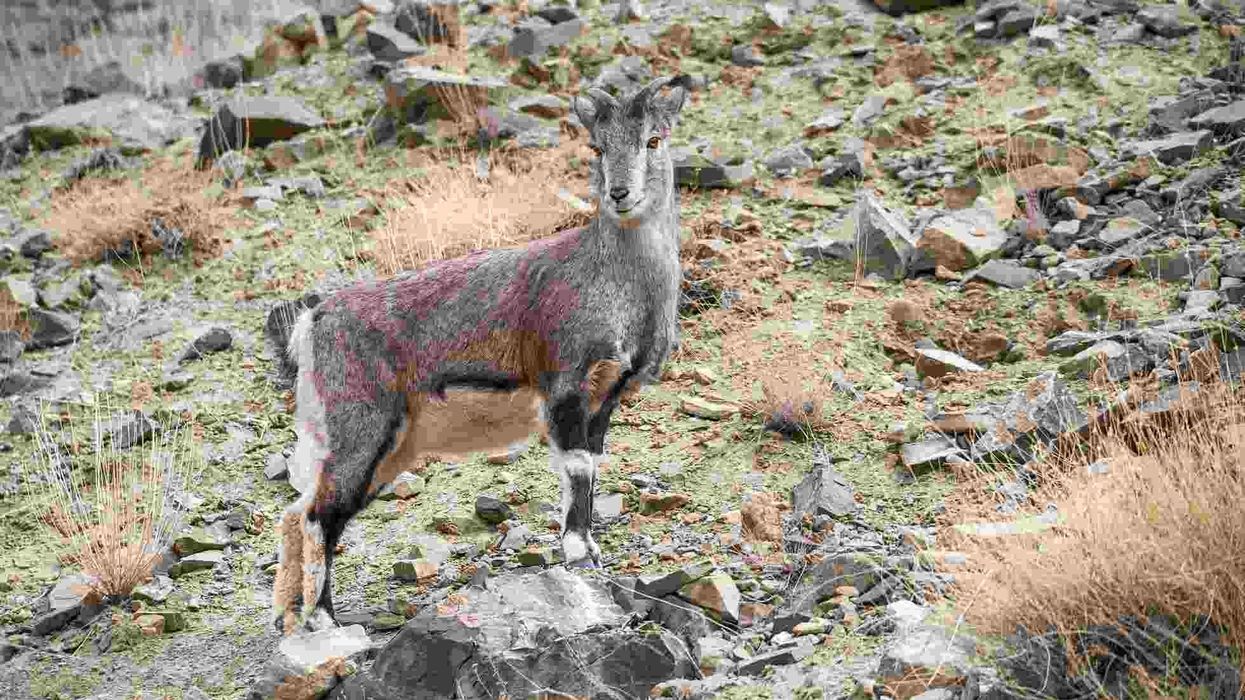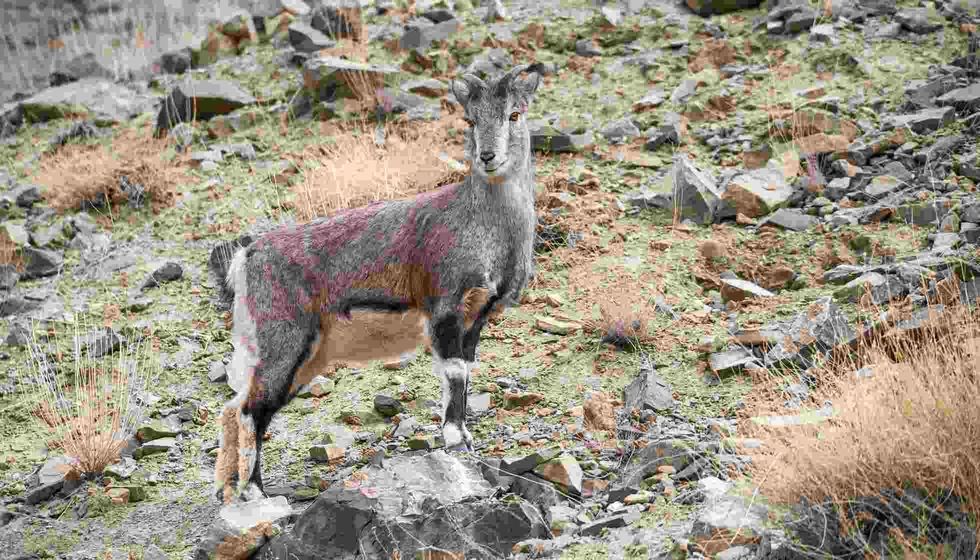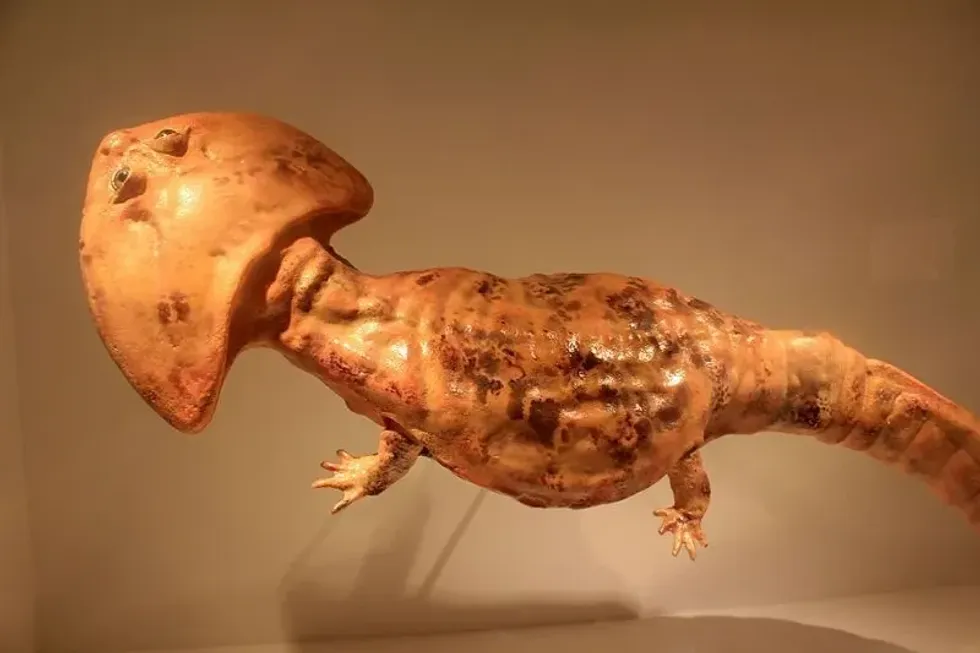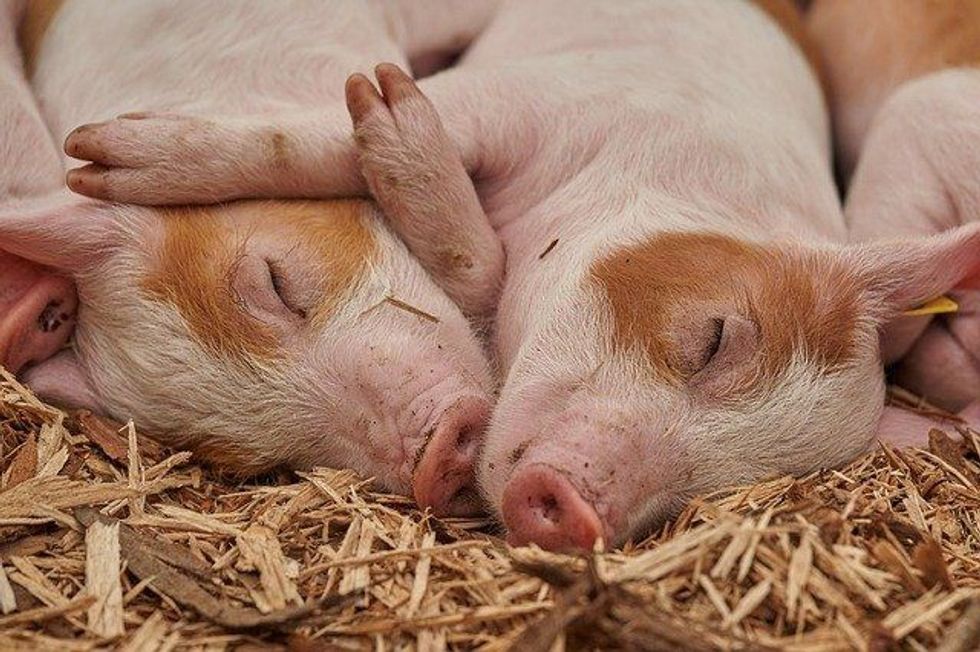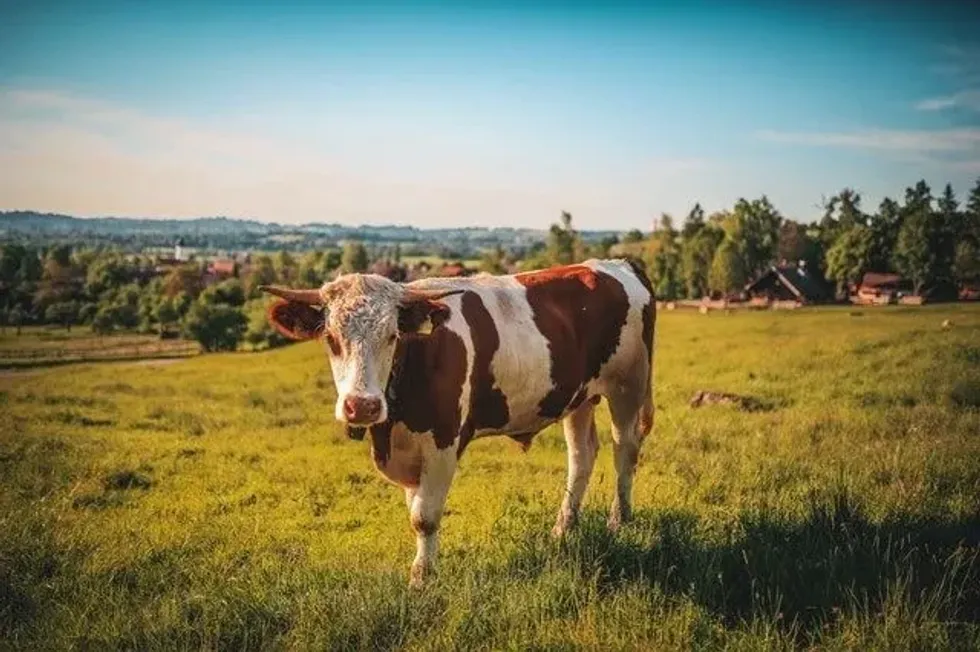Blue sheep (Pseudois nayaur) are medium-sized animals belonging to the Bovidae family that inhabit the steep slopes of the mountains of Southwest China and the Trans-Himalayas.
Initially, they were believed to be a monotypic species but recent researches and studies on morphological traits and molecular genetics have suggested the presence of two subspecies: Tibetan blue sheep (P. nayaur) and Sichuan blue sheep (P. schaeferi).
These two differ in size and range. The Pseudois nayaur is larger in size and inhabits ranges of altitudes between 8202.1-18044.6 ft (2,500-5,500 m) in Tibet, Karakoram, and Pamir, while the Pseudois schaefer gets restricted to the ranges below 3280.8 ft (1000 m) in central-Sichuan of China.
Dwarf blue sheep (Pseudois schaeferi) have a short stocky body specially adapted for their survival in the rocky Trans-Himalayan terrain.
If you find facts about rare animals interesting, consider checking out bighorn sheep facts and Merino sheep facts.
Dwarf Blue Sheep Interesting Facts
What type of animal is a dwarf blue sheep?
Dwarf blue sheep (Pseudois schaeferi) or blue sheep (Pseudois nayaur) are species of endangered sheep that dwell on mountains.
What class of animal does a dwarf blue sheep belong to?
Dwarf blue sheep (P. nayaur or P. schaeferi) belong to the family of Bovidae.
How many dwarf blue sheep are there in the world?
In 2003, the IUCN Red List categorized dwarf blue sheep, also called Pseudois bharal, as an Endangered or Threatened species and it is now under the protection laws of the Sichuan province. In 1997, there were estimated to be 200 dwarf blue sheep remaining.
Where does a dwarf blue sheep live?
Dwarf blue sheep live on low, arid, or grassy slopes, grassy alpine meadows, desert dunes, or mountains in southwest China
What is a dwarf blue sheep's habitat?
Blue sheep (Pseudois schaeferi or Pseudois nayaur) occupy a variety of habitats across the region. They are one of the most tolerant animals of environmental extremes from windy and cold slopes to desert mountains in searing heat. They generally roam near cliffs and similar escape covers and avoid entering forested areas.
Currently, dwarf blue sheep are found on very steep rocky slopes (70-80 degree slope) at 8900-9500 ft (2700-2900 m). At this height, the higher it is the drier the valleys get. Here the grounds are usually extremely dry with a scattered cover of grasses, clubmoss, and low shrubs.
According to local hunters, this species can also be seen between 9500-10,000 ft (2900 - 3200 m) below the forest zone, but that it is not present in oak forests.
Who do dwarf blue sheep live with?
Dwarf blue sheep or dwarf bharal are usually found in groups of about six; however earlier, when their population was denser, they lived in family groups of 10-30 individuals.
How long does a dwarf blue sheep live?
The average life expectancy of a dwarf blue sheep or dwarf bharal varies from their age to their sex. Adults of this species have a longer life span as indicated by the growth rings on the horns.
To get an idea of the maximum lifespan of the bharal animal, samples were taken from hunters: 10% lived one to four years, 73% 4-10 years, and 17% 11-15 years. However, more than 80% of males did not live past their peak age range of 4-10 years.
How do they reproduce?
The blue sheep or the bharal reach their sexual maturity between one and two years of age, but most males are not able to find a mate until they are at least seven years old. Research has shown how until the female bharal is in the estrus period, adult males show very little interest in females.
The estrus period starts near the end of November to February, with the young being born between mid-May and early July.
In this species, the estrus period lasts for almost over a month but the altitude of their habitat decides the start time. The differences among altitudes are likely due to the availability of forage during the time of gestation.
The mating seasons and birth cycles of these wild animals vary across the animal’s habitat range. In general, the blue sheep mate during the winter and give birth in the summer.
Reproductive success depends upon weather conditions and levels of nutrition. The gestation period of the blue dwarf sheep goes on for about 160 days.
Each pregnant female gives birth to one offspring in a single cycle and the weaning cycle of the offspring goes on for about six months. Dwarf blue sheep breeders often play a huge role in this cycle of mating.
What is their conservation status?
According to the IUCN Red List, this species is Endangered and the subspecies are protected under Chinese national law as a Category II protected species under the Wildlife Protection Law of 1988.
Since the whole issue was recognized as unique and important, a concerted effort has been made by scientists temporarily working in the area to educate local hunters.
Scientists proposed several conservation measures such as continuing to examine its taxonomic status and if the species become considered a full species, it would be raised to a Class I species in the national protection list.
Also, protected areas need to be established.
Reserves at Batang, or in adjacent areas where the population is still relatively abundant, have been suggested. As well, a regular survey and monitoring are essential to determine the status and total distribution of blue sheep throughout the suspected range.
A prefectural reserve covering 55 sq mi (142.4 sq km) (which was later enlarged in 2007) around the areas of Zhubalong was established in the year 1995, just for the protection of this species.
However, activities like mushroom gathering and livestock grazing, or illegal hunting by humans continue to occur in this zone and continue to threaten the populations here.
Dwarf Blue Sheep Fun Facts
What do dwarf blue sheep look like?
Dwarf blue sheep have a similar appearance to goats, they have a broad and sturdily built body and fat legs. Just like goats, they too have horns.
Their name blue sheep comes from their pelage that has a range from grayish brown to slate blue. The bluish tone in the skin of the upper parts of their body makes them almost undetectable against their background of blue-grayish rocks, which is typical within their habitat.
Though they have short hair, they lack a beard like wild goats. They still have more common characteristics of a goat than other sheeplike features. They have a black stripe that clearly separates the upper area of the back from the white side.
Mountain sheep have horns that sweep up and out and then curve back before curling at the very end of the tip. Females have a resemblance to males except they have small horns and the stripe separating their upper part is gray and not black.
Young mountain sheep also have similar small horns and their horns keep growing as their age progresses. Their age can be easily identified by the age rings on their horns.

How cute are they?
The appearance and nature of these animals are often only appealing in their natural habitat. They might still be considered adorable by some, but their cuteness truly depends from perspective to perspective.
How do they communicate?
Like other sheep-like animals, they too have their own calls, to use as a medium to communicate with each other.
How big is a dwarf blue sheep?
The average length of both males and females is reported as approximately 31 in (0.8m). This range varies depending on their age and sex.
How fast can a dwarf blue sheep run?
Dwarf blue sheep are often considered lazy as they will alternate their activities through the day, going from sleeping to grazing and again back to sleep over the course of the entire day. However, their habitat has made them fast runners and very good mountaineers.
Like any other animal, they also have the capability to adapt to their surroundings, this helps them escape from predators like wolves.
How much does a dwarf blue sheep weigh?
The weight of male bharal sheep has been reported varying from a range of 62-86 lb (28-39 kg) and 75-97 lb (34-44 kg) with a maximum of about 143 lb (65 kg). The average weight of females has been reported as approximately 55-77 lb (25-35 kg).
What are the male and female names of the species?
While male and female blue sheep have different features, unfortunately, they do not have separate names.
What would you call a baby dwarf blue sheep?
A young or baby dwarf blue sheep has no separate names by which to be referred to.
What do they eat?
The diet of blue sheep or bharals mainly consists of alpine grasses from the alpine meadows in the summer. However, blue sheep often show a seasonal change in their diet.
As reported in Schaller (1998), graminoids (grasses) range from 10.5-92% of their diet in the summer, however, grasses are also the main source of their diet in the winter, which is supplemented with shrubs and forbs.
They get enough vegetation from their habitat and don't have to rely on any forest for their diet. They try to avoid the forest zone as much as possible.
Are they dangerous?
Though they belong to the wilderness, they are peaceful and have seldomly been reported as dangerous. Both males and females graze throughout the day and stay within their own limits.
Would they make a good pet?
There are breeders who breed these animals for their own purpose but a bharal is not exactly considered an ideal pet.
Did you know...
Dwarf blue sheep is one of the world's rarest mammals.
The mixture of their sheeplike and goatlike traits and habits has often resulted in confusion about their evolutionary relationships.
Dwarf blue sheep were initially recognized by some people as a subspecies of the blue sheep way back in 1963 but finally got recognized as separate in 1978.
Why are dwarf blue sheep endangered?
Bharals are today endangered and are decreasing in number because of many different issues, these animals are hunted and trapped regardless of their age or sex. Males, females, and the young are used by breeders or are being hunted down.
Agriculture and aquaculture are other elements endangering the population of bharals. Annual and perennial non-timber crops and livestock farming and ranching are continuously threatening the population.
Why are blue sheep called blue sheep?
The bluish tint in the skin tone of dwarf blue sheep, be it, males or females is the reason behind their name. This helps them to become almost invisible behind the blue rocks and boulders in their habitat and escape their predators.
Here at Kidadl, we have carefully created lots of interesting family-friendly animal facts for everyone to discover! For more relatable content, check out these Polish lowland sheepdog facts and black-tailed jackrabbit facts for kids pages.
You can even occupy yourself at home by coloring in one of our free printable year of the sheep coloring pages.
Second image by Adityavikramverma.
*We've been unable to source an image of a dwarf blue sheep and have used an image of a blue sheep, one of the parent breeds of dwarf blue sheep, instead. If you are able to provide us with a royalty-free image of a dwarf blue sheep, we would be happy to credit you. Please contact us at hello@kidadl.com.

